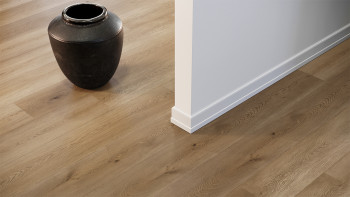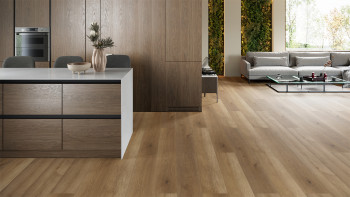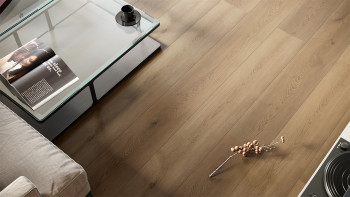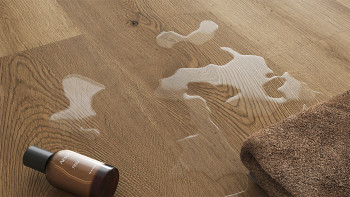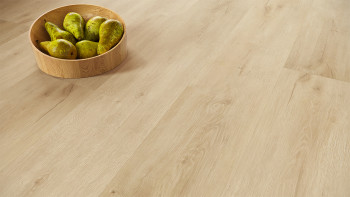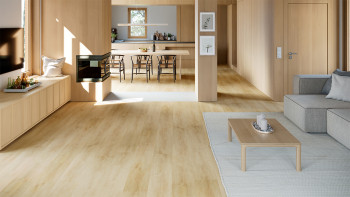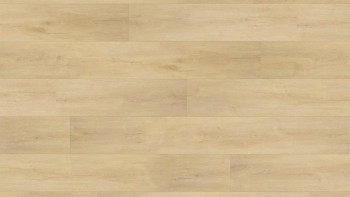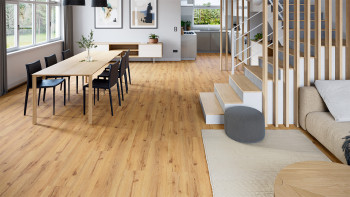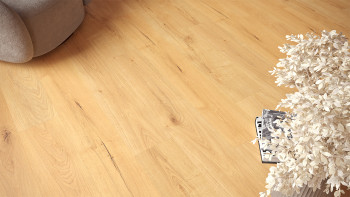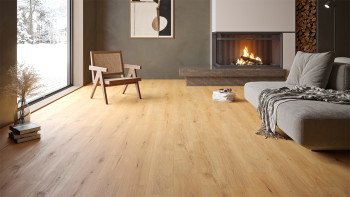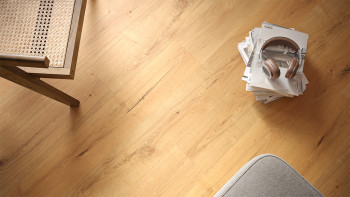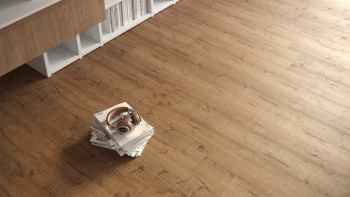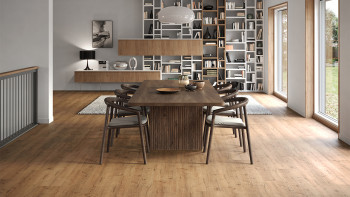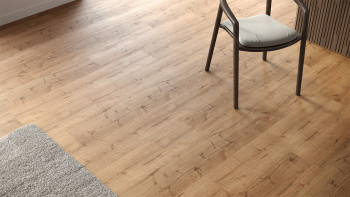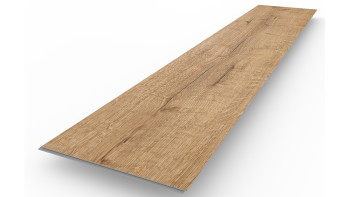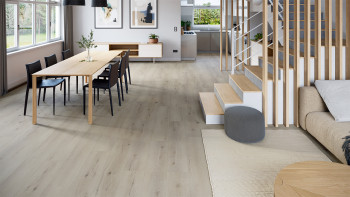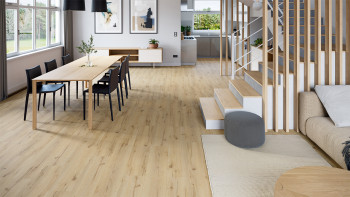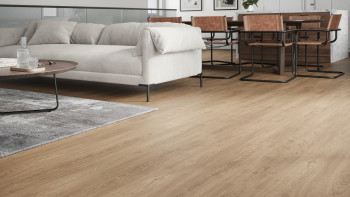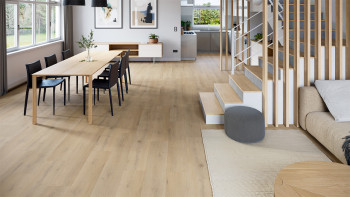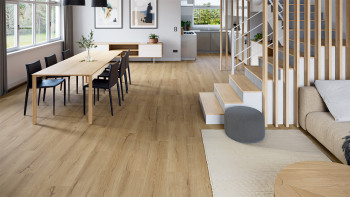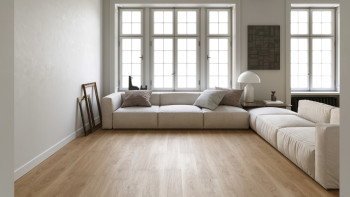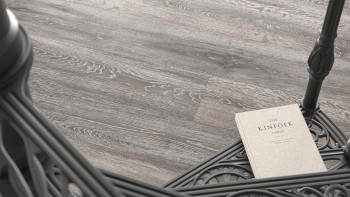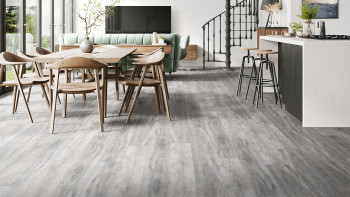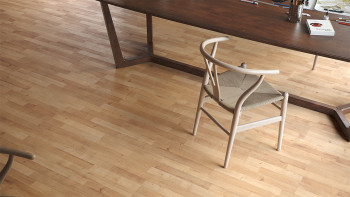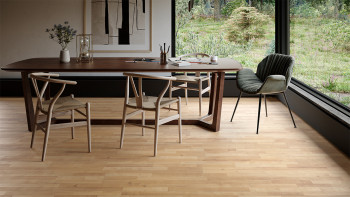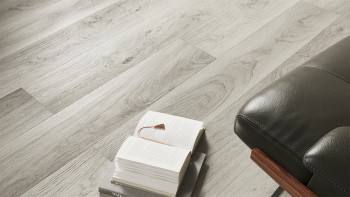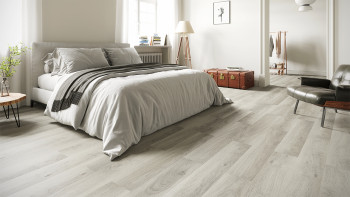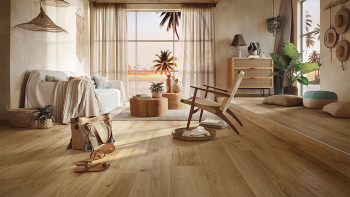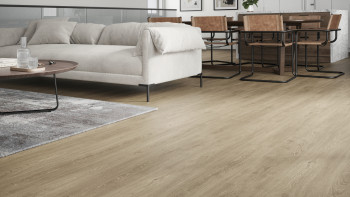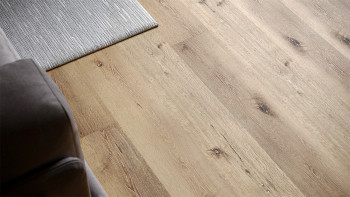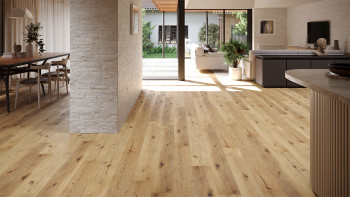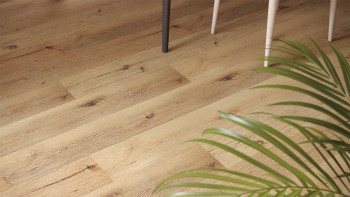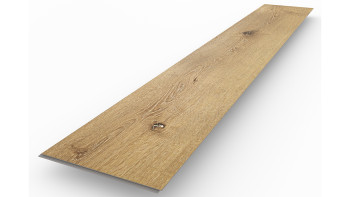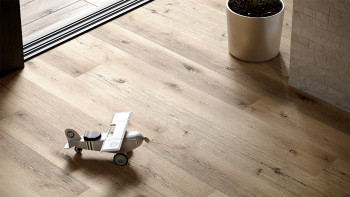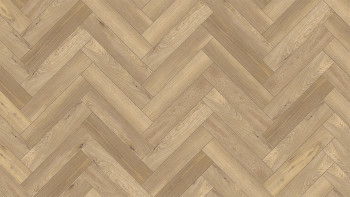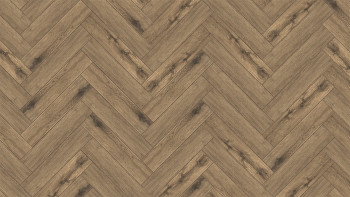Is vinyl flooring suitable for the kitchen?
Choose a vinyl floor for the kitchen without a water-sensitive substrate, at this can swell if the liquid is not removed quickly. Solid vinyl flooring that can be clicked or glued down is extremely resilient, easy to clean, suitable even for use with underfloor heating and available in many select designs. For example, the oak-effect vinyls have a tactile wood structure. The wear layer of 0.7 mm makes it suitable for use in heavily used areas such as kitchens and commercial spaces.
What are the advantages of vinyl in the kitchen?
Vinyl in the kitchen withstands heavy use like nothing else. It is robust, resistant to impact and easily withstands moisture and grease . Vinyl floors are resilient flooring, which is not only comfortable to walk on, but can also cushion falling objects. You can order matching floor samples of vinyl for your kitchen free of charge in our online shop.
What should I bear in mind when installing vinyl flooring in the kitchen?
When installing vinyl flooring in the kitchen, it should be noted that the floor must "float". In practice, this means that the flooring must be laid around fixed fixtures - such as a fitted kitchen. This ensures that the floor does not curl. To do this, simply lay the flooring close to the feet of the fitted kitchen.
The planeo floors tolerate joint widths of up to 5 mm for tile joints. For thicker joints, you will need to level the joint.The first row of the flooring is pushed against the wall. After laying further rows, a gap of 5 mm to the wall must be left.
You can find detailed tips on installing vinyl flooring in the kitchen in our guide article and on our YouTube channel. Follow us and get in touch, we will be happy to inform you!
Conclusion
For use in the kitchen, our robust, easy-care, moisture-resistant solid vinyl flooring is ideal for clicking or gluing down. Choose your favourite from our variety of high-quality vinyl floors for the kitchen! We will be happy to advise you - please contact us!
